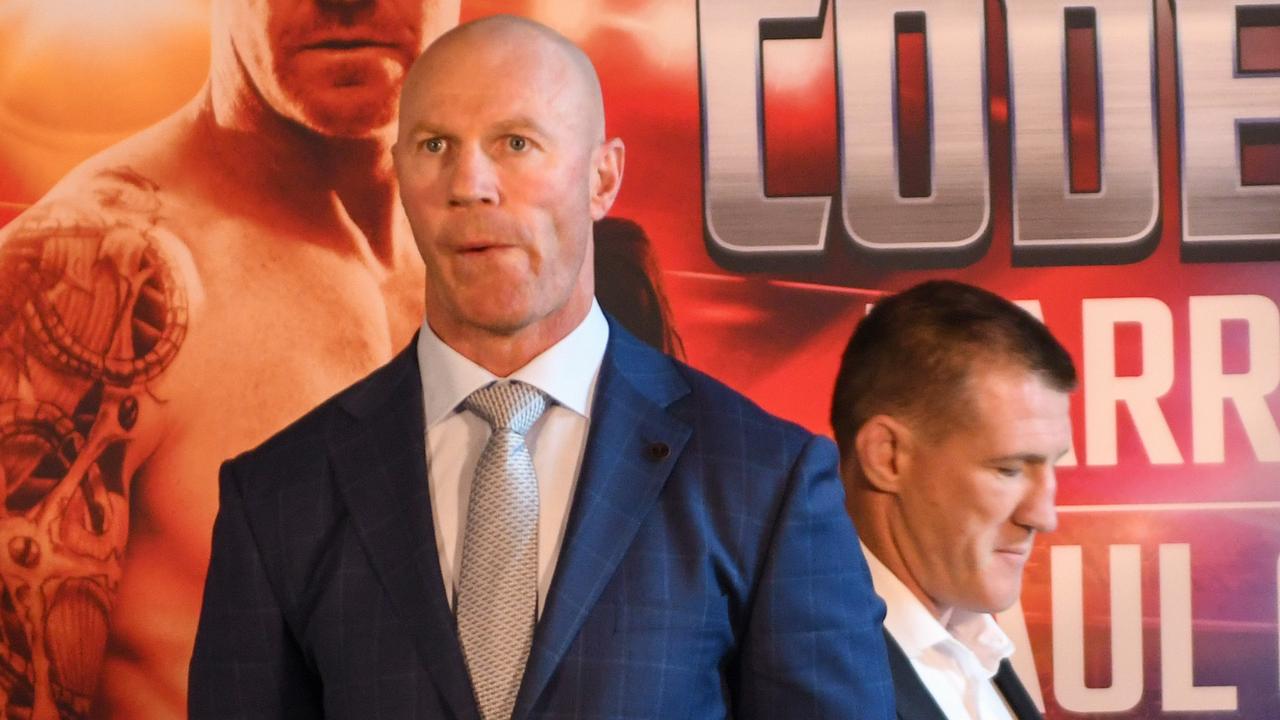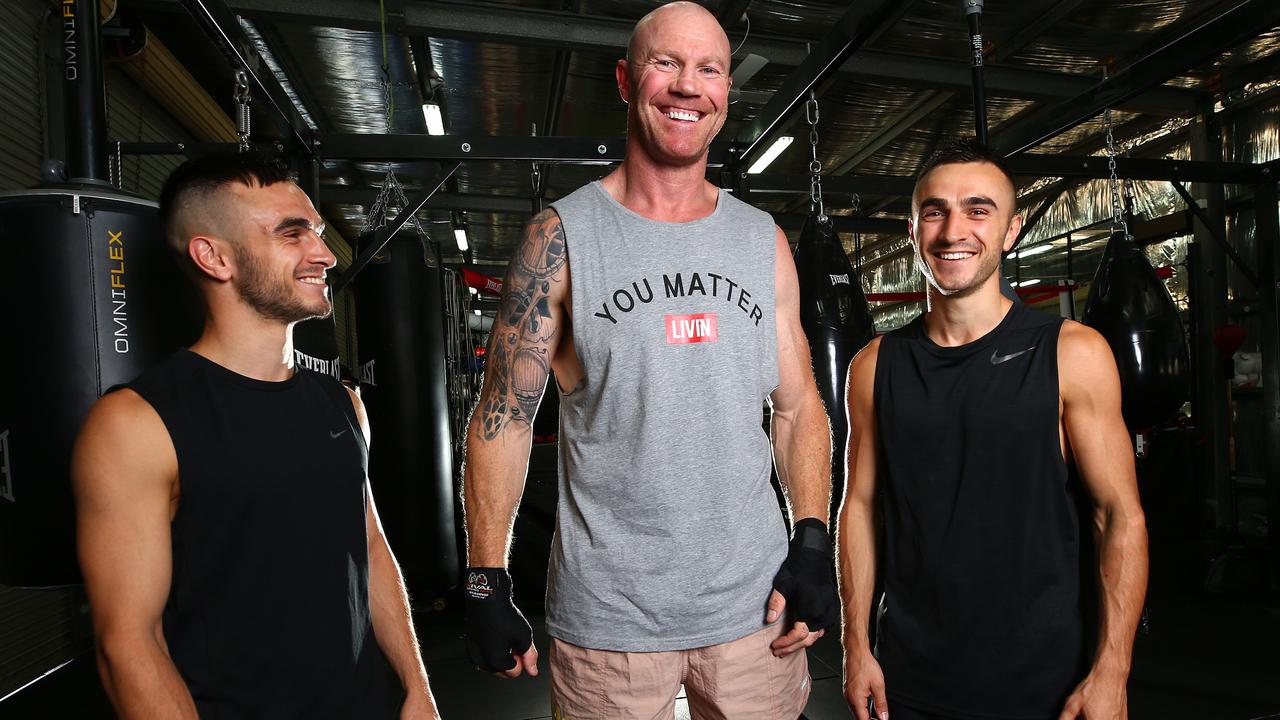The Patrick Dangerfield-Nat Fyfe contest was a modern day epic, writes Mark Robinson
THE TACKLE: Collingwood’s Jamie Elliott is one of the best small forwards in the game, writes Mark Robinson. LIVE CHAT 2.30PM
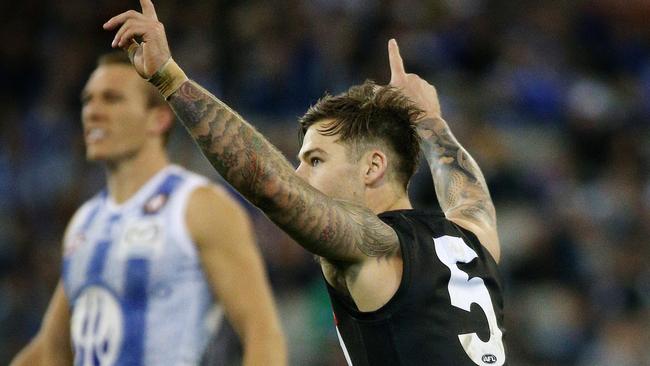
AFL
Don't miss out on the headlines from AFL. Followed categories will be added to My News.
JAMIE Elliott is the new Alan Didak.
Elliott has played 61 games for Collingwood and kicked 90 goals. After 61 games, Didak had kicked 78 goals.
They are different-styled players working in the same part of the ground, but both equally as dangerous.
CHAT LIVE WITH ROBBO BELOW FROM 2.30pm
Elliott has bags of five, five and four among his tally of 21.8 in nine games this season.
He is admired for his marking ability and talent for goals and has at least two best afields this season.
He is, however, not the best small forward in the game this season.
That honour goes to Adelaide’s Eddie Betts.
Also an outstanding mark, Betts is rocking along at 31.10 this season with hauls of four, four, five, five and a six.
The next best is Hawthorn’s Luke Breust with 22.13, then Elliott and then a player who has resurrected his career, West Coast’s Josh Hill, who has kicked 20.6.
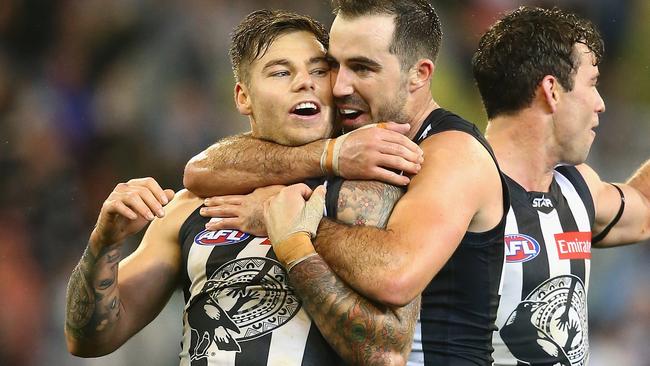
Elliott would have to be the best mark for his size in the competition, a description that used to be the honour of Geelong’s Jimmy Bartel.
He is breathtaking, Elliott, a matchwinner.
He had a so-so first half on Sunday, as did the Magpies, and came alive in the third-quarter, as did the Magpies.
On the lead, or flying in the pack, Elliott knows how to get to the drop of the ball.
And he’s just 22.
It was a terrific game on Sunday.
North dominated the first half, couldn’t touch the Magpies in the third quarter, North regained the lead, before the Magpies killed it in the last eight minutes.
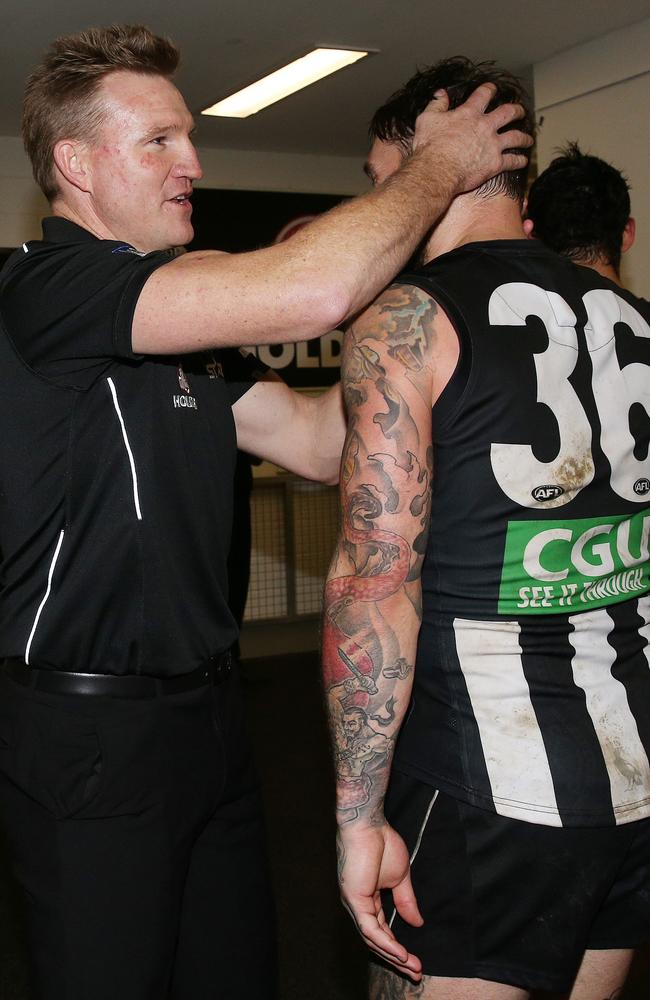
Dane Swan kicked the go-ahead goal, out-marking Jamie Macmillan just outside the square, before Jarryd Blair iced the game, and Elliott kicked the crowd-pleaser after the siren.
“That’s the worst half of footy we’ve played this year,” Buckley said in the post-match.
“We were that far off it, it wasn’t funny. It didn’t look like we were working, our key defenders were sagging off and allowed their big boys hit-ups (marks).’’
As for the second half, Buckley said: “I think we’ve got a young group that believes it can be good and it believes it can play good footy’’
DANGER-FYFE BATTLE A MODERN DAY EPIC
MARK Ricciuto couldn’t remember anything like it.
Two modern-day champs going head-to-head and the coaches — Ross Lyon and Phil Walsh — let it unfold.
It was Nathan Fyfe versus Patrick Dangerfield.
If you didn’t see the game, just imagine both of them playing their very best football, imagine both hunting the ball with fury and power and both inspiring their teammates in a wet, congested and last-man-standing kind of game.
It was epic. It was a throwback to a time when the best players played on the opposition’s best players in the middle — which was last-century football philosophy — and the match-up typified a bruising and totally committed performance from both Fremantle and Adelaide.
Dangerfield v Fyfe was the contest within the contest and in many ways it was more intriguing than the match itself.
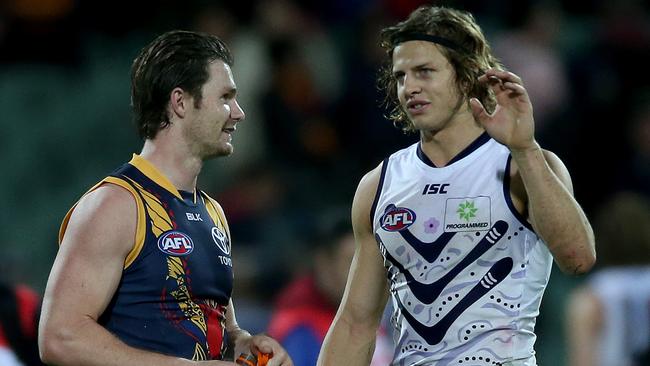
When Dangerfield sidled up to Fyfe at the start of the game, side-by-side in the centre square, he pushed Fyfe as if to say, let’s go.
Asked about the match-up, Ricciuto giggled.
“It was brilliant,” he said. “Danger is a competitive beast like the best players are and him looking at Fyfe, it was an opportunity to go head-to-head and the opportunity to enhance his reputation of his place in the game.
“That’s what you do when you’re a midfielder and when I was playing it was up against Bucks or Voss or someone like that, people decide the pecking order of mids in the comp and the battle decides where you sit in that pecking order.
“And they both passed. There were two winners, probably three, both of them and football.”
Walsh let it happen because: “Call me a weirdo, but I think we have to protect the look of the game. I want to win, but I also think the fans want to see those great battles.”
Lyon let it happen because: “We both let it roll and backed our players in. We acknowledged Dangerfield was getting a fair bit and we thought we’ll just let it sit. We didn’t want to go negative. We wanted to attack through the midfield.’’
Ricciuto was thankful Ryan Crowley didn’t play.
“People don’t like taggers because it stops that sort of thing,” he said. “You would’ve had Crowley on him and who likes watching Crowley on Dangerfield compared to Fyfe on Dangerfield?
“When gun midfielders go up against each other, that’s when pride starts taking hold of you. You want to take a scalp, you want to test yourself up against the guns.”
The Dockers won. Fyfe probably, maybe headed Dangerfield, but I dare anyone to offer conclusive proof that Fyfe was the better player.
History documents another famous game — Round 11, 1978 — when Hawthorn’s Peter Knights the defender played on Essendon’s Paul Van Der Haar the forward. Both were high-flying marking freaks.
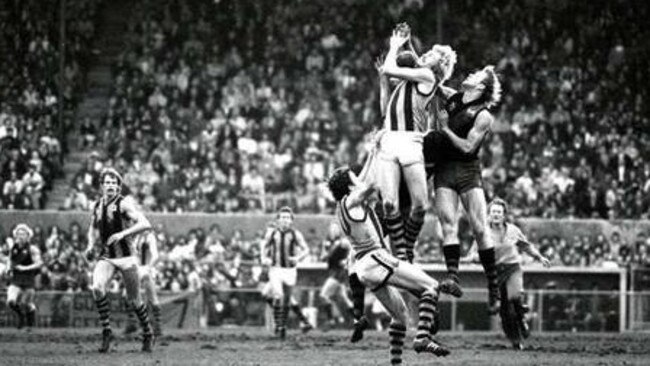
The match-up is on YouTube so do yourself a favour.
Saturday night was the modern-day version of that encounter.
The stats are staggering, the actual contest was mesmerising. You found yourself, at stoppages, just looking at Fyfe and Dangerfield. If either won the ball they mostly did it under duress. If they didn’t win the ball, off they’d go hunting it unimpeded by a tag, but both close enough to each other to be responsible for each other.
“We shook hands at start and didn’t see each other again,” Fyfe said after the game.
But that wasn’t true. They played on each other for 78 minutes and must have stood each other for at least 30 stoppages.
“He’s a great player and a great fella and you like to test yourself against the best, I thought it was a great duel,” Fyfe said.
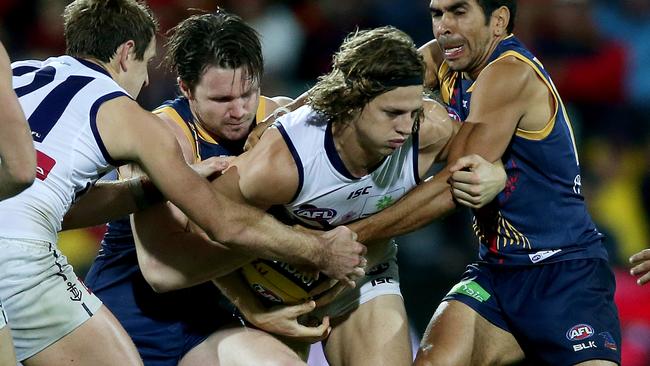
For three quarters, they tested and bested each other and the final quarter was something else.
This was that it was like:
Bounce down. Dangerfield tackles Fyfe and Fyfe tackles Dangerfield at consecutive stoppages and Dangerfield tacks Fyfe at the next. Fyfe wins a clearance, Fyfe free. Dangerfield clearance. Fyfe goes third-man up in the ruck. Dangerfield free. Fyfe clearance and dribbles a point. Dangerfield blocked and Fyfe goes third-man up. Fyfe handball. Dangerfield kick. Dangerfield free. And on and on it went.
How these two continued to attack the ball, exhausted and hurting, was the remarkable thing.
At the end, there was a handshake and a hug between them and the rest tried to work out who was the more influential player.
“You could make a case for both of them to be best player,” Ricciuto said. “It doesn’t really matter, they were both that good.”
Originally published as The Patrick Dangerfield-Nat Fyfe contest was a modern day epic, writes Mark Robinson

